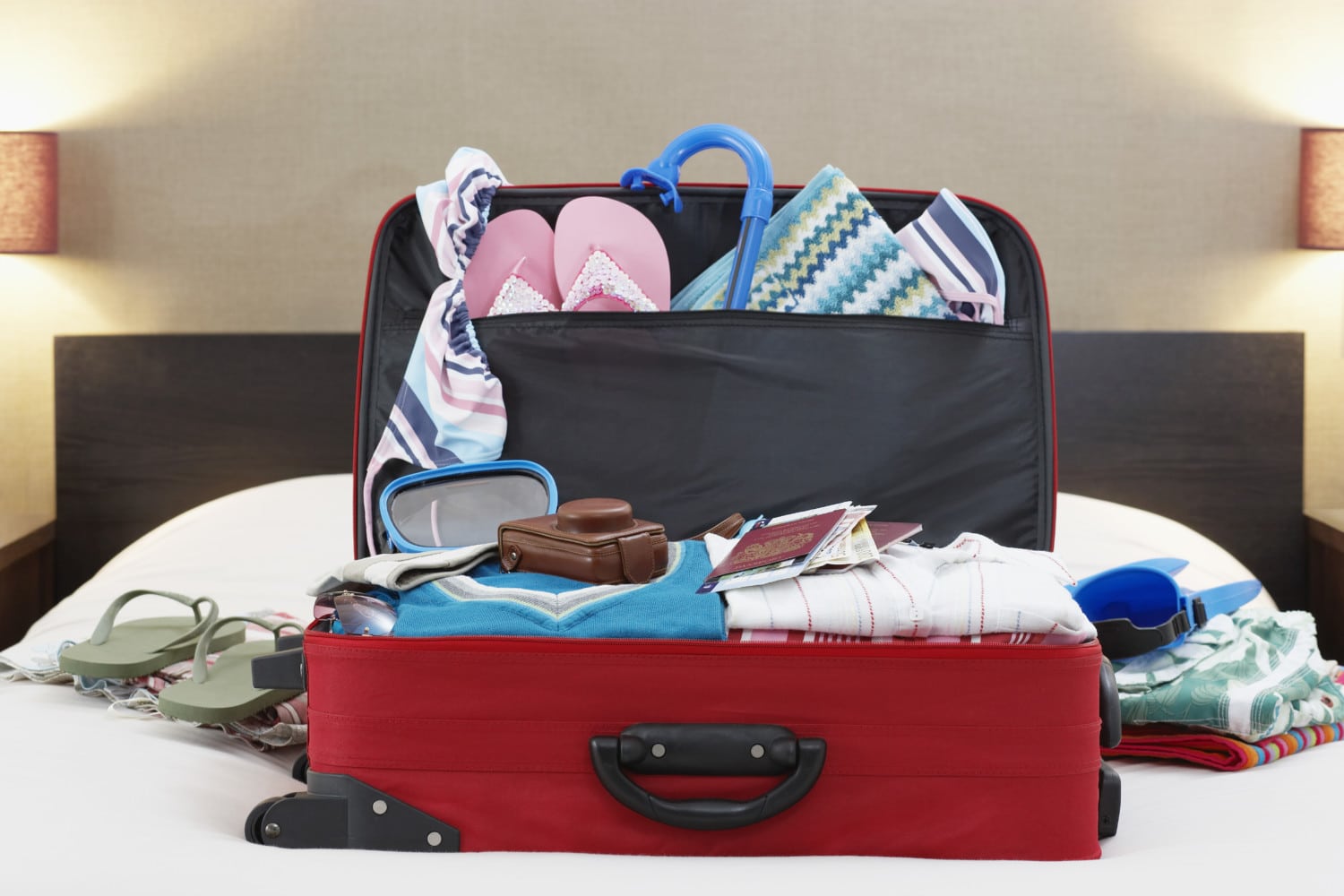11 mistakes people make when traveling to Europe
One of my best friends is getting married in Italy this spring, and, as part of her hair and makeup team, I shot awake earlier this week with a realization: Will our American hair dryers blow a fuse? (The answer, according to my midnight research session: We’re fine so long as we pack a dual-voltage dryer.)
But from power adapters and voltage converters to currency and international driving permits, there’s a lot of extra little things to consider when traveling to Europe for vacation. No matter how many Rick Steves travel guides you read or how much you prepare for a trip to Europe, there’s bound to be a thing or two you learn through experience while on the ground. (Speaking of grounds, a lot of it’s cobblestone, which is pretty tough to roll your suitcase over or walk in flip-flops on; more on that below!)
Ahead of the busy summer travel season, here are 11 common mistakes to avoid when traveling to Europe.
1. Overpacking
The first time I visited the Amalfi Coast with my girlfriends, we moved between the cliffside towns of Positano, Capri and Ravello throughout the week. We took public transportation, booked taxis and ferried about, all with our carry-ons in tow. Already, it’s a bit of a feat to roll even the most compact carry-on along the cobblestone streets and through narrow passageways, and larger luggage can be especially tiresome. In a lot of European towns, a taxi can get you close to your hotel, but some small streets are closed off to through traffic so you’ll also have to do some walking. Plus, you don’t want to be hauling a bulky full-size up and down stairways.

2. Forgetting a Power Adapter
The scenario: After a long day of travel, you get to your hotel and go to plug in your phone charger only to realize it doesn’t fit in the outlet. European outlets differ from the ones in America in that they have two rounded prongs with the exception of the UK and Ireland, where plugs have three pins arranged in a triangular shape. Put a power adapter on your packing list and, if you’re a frequent international traveler, opt for one that’s universal with multiple prong options so that you can use it in other places around the world. This is especially helpful if you’re traveling throughout Europe but have a long layover in a London airport. If you do end up forgetting an adapter, you can often borrow one from your hotel’s front desk or find one at a local store.
3. Not Carrying Cash
I get it; you’re accustomed to swiping your credit cards or tapping your phone to use Apple Pay. But if you want, say, a scoop of gelato or an espresso from a small cafe, it’s best to have some euros on hand as many places don’t accept credit cards. Even larger restaurants and bars (especially throughout Germany) are often cash-only establishments, as well.
4. Not Having Coins on Hand
You’ll also want to make sure you have some small denominations in your wallet, as many public bathrooms in train stations and throughout larger European cities have attendants and require a small fee (usually less than a euro or pound).
5. Letting the ATM Convert Your Withdrawals
It’s convenient to grab some euros from an ATM as soon as you touch down, but doing so will typically tack on a charge in the ballpark of 4% to 9% says Nate Hake, founder and CEO of the travel site Travel Lemming. Decline currency conversion at the ATMs, he says. If you’re a frequent traveler, he recommends getting an ATM card that refunds ATM fees worldwide, such as the Schwab Investing Checking account. Or, as long as you plan far enough in advance, you can probably get currency exchanged at your bank or credit union — an exchange route that tends to be the cheapest.

6. Expecting Air Conditioning at Your Hotel
One of my favorite feelings when traveling is retreating to a hotel room after a long day out in the heat and enjoying the AC on full blast. But many hotels in Europe don’t have air conditioning or if they do, it can’t be cranked up as we’re accustomed to in the U.S. If AC is a must-have amenity for you while traveling, check with your hotel first to see whether or not they have in-room air conditioning. Chain hotels, especially ones that have a large North American presence, are likely to have AC — but it’s still a good idea to check.
While we’re on the topic of staying cool: Don’t expect water or drinks to be served over ice. You may have to specify your preference for ice while ordering.
7. Booking the Wrong Type of Rental Car
When my boyfriend and I were looking at rental car options in Menorca, a small Balearic island east of mainland Spain, I was surprised to see how inexpensive the options were. But when we dug a little deeper, most of those good deals were for cars that are manual, and it’s been a couple of decades since I drove a stick. Opting for an automatic is a bit more expensive, but it’s worth it if that’s what you’re more comfortable driving.
Also note that some rental cars are very small and have barely any trunk space, so be sure that the car you book will comfortably fit you and your luggage.
And one last note on rental cars: European rental car companies usually place a large hold on your credit card, so be prepared to have a pending authorization between $900 to $2,000 euros while you’ve got the rental.
8. Forgetting To Get an International Driver’s Permit
If you’re planning on renting a car in a European country, getting a $20 AAA international driver’s license (IDP) will smooth out the process. Whether or not you actually need one varies by country; however, some rental car agencies will require an IDP before they hand over the keys to you. According to AAA, some countries such as Hungary don’t recognize state-issued driver’s licenses but accept IDPs.
An IDP will also satisfy Spain’s requirement that a driving document is translated into Spanish because the document translates your information into 10 languages, including Spanish.
9. Booking a Hotel Outside of the City Center
While you may save some money going this route, booking a hotel outside of the city centers of some of Europe’s most popular cities including Paris, London and Rome can require a lot of extra travel time and hassle, especially if you’ve got kids in tow, says Cassie Tetro, a certified travel expert and itinerary designer who helps families plan European vacations.

10. Taking Taxis Everywhere
On a group trip to Florence, Italy, one friend took a taxi to the center of the city while I took the train. Because of all of the traffic congestion in the city, it was actually much quicker to take the train, not to mention I saved the USD equivalent of $20. Note that when you’re taking the train in European countries, you’ll want to get your ticket validated — most of the time it’ll be valid for a four-hour window.
11. Not Saving Room for Souvenirs
Another mistake people make when traveling to Europe is forgetting that they’ll probably purchase a bottle of wine or olive oil and want to bring it home, says Kate Bossany, a travel expert with Throne and Vine, specializing in South Tyrol and Dolomites trip planning. Instead of stressing that your bottles will break in your luggage, she recommends buying a few lightweight wine protector sleeves that are leak-proof and lined with bubble cushioning wrap.
